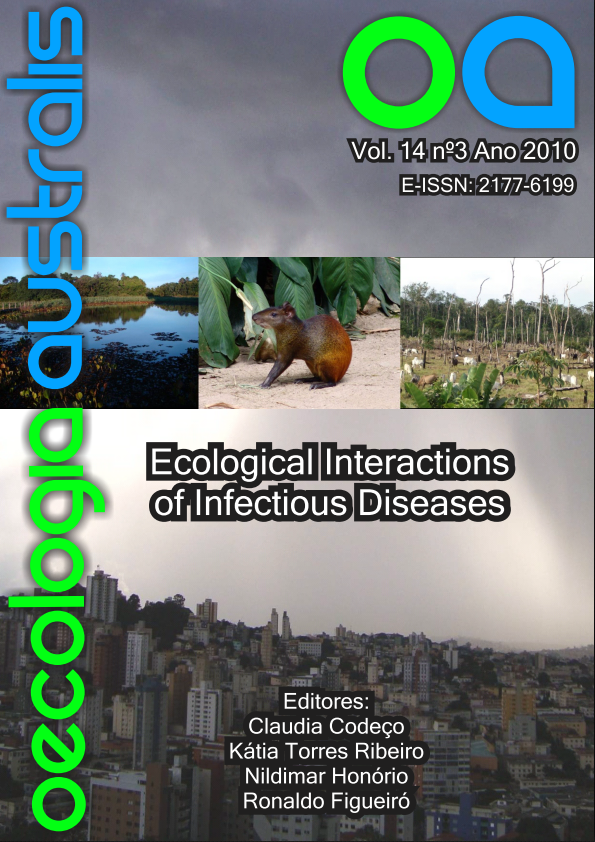UMA REVISÃO SOBRE A PARTICIPAÇÃO DO RATO D'ÁGUA NECTOMYS SQUAMIPES NA DINÂMICA DE TRANSMISSÃO DA ESQUISTOSSOMOSE MANSÔNICA: UM ESTUDO MULTIDISCIPLINAR DE LONGO PRAZO EM UMA ÁREA ENDÊMICA
Keywords:
Roedores, Schistosoma mansoni, reservatório silvestre.Abstract
A REVIEW ON THE ROLE OF THE WATER-RAT NECTOMYS SQUAMIPES ON THE TRANSMISSION DYNAMICS OF MANSONIC SCHISTOSOMIASIS: A LONG TERM MULTIDISCIPLINARY STUDY IN AN ENDEMIC AREA. Rodents of the genera Nectomys and Holochilus are the most important mammals to be considered as potentially wild reservoirs of Schistosoma mansoni, and are easily found naturally infected in endemic areas of schistosomiasis. Furthermore, several field and laboratory studies proved that they are good alternative models for S. mansoni experimental infection studies. A fifteen years multidisciplinary study was developed in Sumidouro Municipality, State of Rio de Janeiro, in order to understand the role of the semi-aquatic rodents on the schistosomiasis transmission. This project covered ecological aspects of the water-rat Nectomys squamipes, parasitological aspects, studies of the intermediary host Biomphalaria glabrata, monitoring and treatment of the parasitological infections of the local human population, and health educational activities. Based on this program, several criteria were established to characterize N. squamipes as a host-reservoir of S. mansoni. The results showed that this rodent may increase the schistosomiasis transmission in endemic areas and can be used as a biological indicator of the transmission sites of this parasite. N. squamipes showed different levels of importance in the transmissiondynamics of S. mansoni infection cycle in each studied area. Thus, the presence of such rodents in endemic areas should always be considered in the control programs of schistosomiasis.
Key-words: Rodents; Schistosoma mansoni; wild reservoir.


